Paradox: Breakbeat Mastery

Since the late ‘70s breakbeats have been sampled and repurposed across an ever-evolving global continuum of electronic music. Over time, this method of beatmaking has become highly intricate and nuanced with some of the more technically demanding examples found in drum & bass and its sub-genre drumfunk; which is known for its constantly shifting patterns, derived from rare obscure breakbeats or well-known classics.
Dev Pandya, aka Paradox, has pioneered the drumfunk genre for over two decades. With a vast catalog of vinyl releases to his name, his beats have become notorious for their meticulous programming, perfectly placed shuffles and unparalleled grooves. Having made regular appearances on acclaimed labels such as Moving Shadow, Metalheadz and Reinforced, Dev’s discography is a testament to a lifelong, unwavering dedication to his craft.
Some popular tracks featuring Paradox
"Back in 1989, we were fusing fast funk breakbeats with 8-bit techno stabs and 808 basslines”, he reminisces. “We weren’t sure what sound we were creating as there wasn’t anything else at our tempo. The internet wasn’t born then, so we sent a few cassette tapes to a bunch of labels. Moving Shadow got back to us and we met the owner Rob Playford. Upon listening to our tracks he said they were way too fast and asked what the BPM was. We didn’t know as our computer didn’t have a BPM counter, but they sounded fine to us and we didn’t want to change them. Looking back now he must have thought we were mental. But he offered us a contract that day and we said we’d go away and discuss it. As we left we passed a coat rack and saw these Moving Shadow jackets hanging up with the dancing man logo on the back. My production partner DJ Trax and I looked at each other and just knew. We called Rob later that day and accepted the MS deal and our first Mixrace 12-inch was released in 1992.”
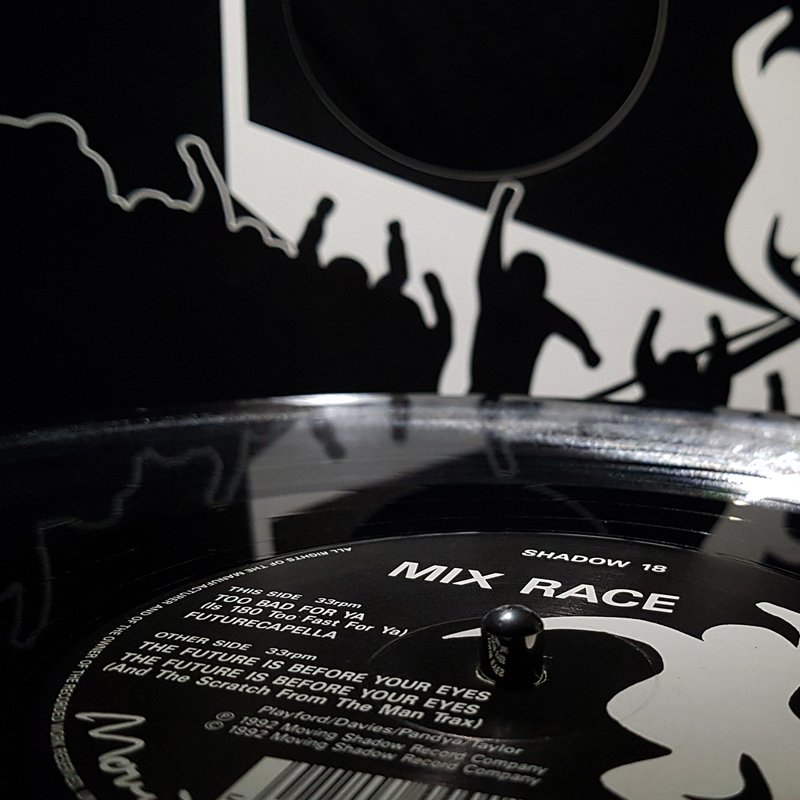
Mixrace – “The Future Is Before Your Eyes”, released on Moving Shadow, 1992
As a self-proclaimed B-boy, Dev's fascination with the cultural lineage of breakbeats is deeply rooted, having inspired frequent trips to record shops, where he and fellow producer Nucleus could be found crate-digging for rare collectibles and hidden gems. Looking back on his earliest forays into sampling classics like The Winstons’ “Amen Brother” and James Brown’s “Funky Drummer”, Dev recollects his discovery of the Ultimate Breaks and Beats LP series, which influenced the production of his own Paradox vinyl-only drum break series Wax Breaks. Dev has shared some free loops from the series, which you can download and try out yourself.
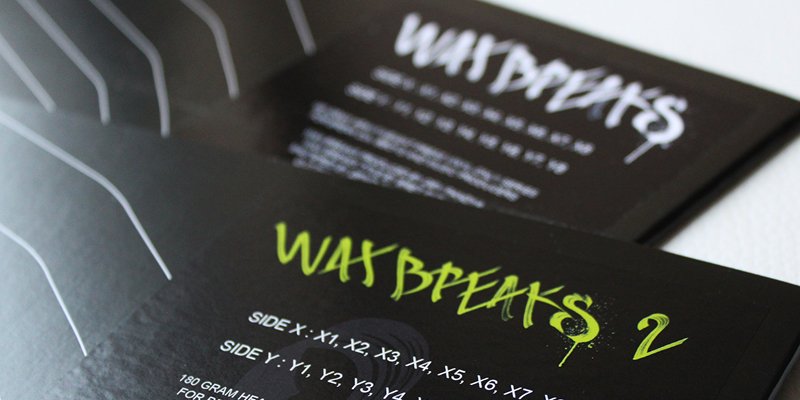
Wax Breaks record sleeves
With his strong command of rhythm theory, it would be natural to assume Dev had a background or education in drumming. But surprisingly, he hadn't picked up a set of drumsticks before making music. Dev’s beats nonetheless once piqued the interest of Dutch drum and percussion magazine Slagwerkkrant, where he was featured as a computer drummer beside Phil Collins.
“I think some readers voiced their opinions later that I shouldn’t have been in there as I had never touched a drumstick, but it’s still a favorite magazine feature in my press catalog.”
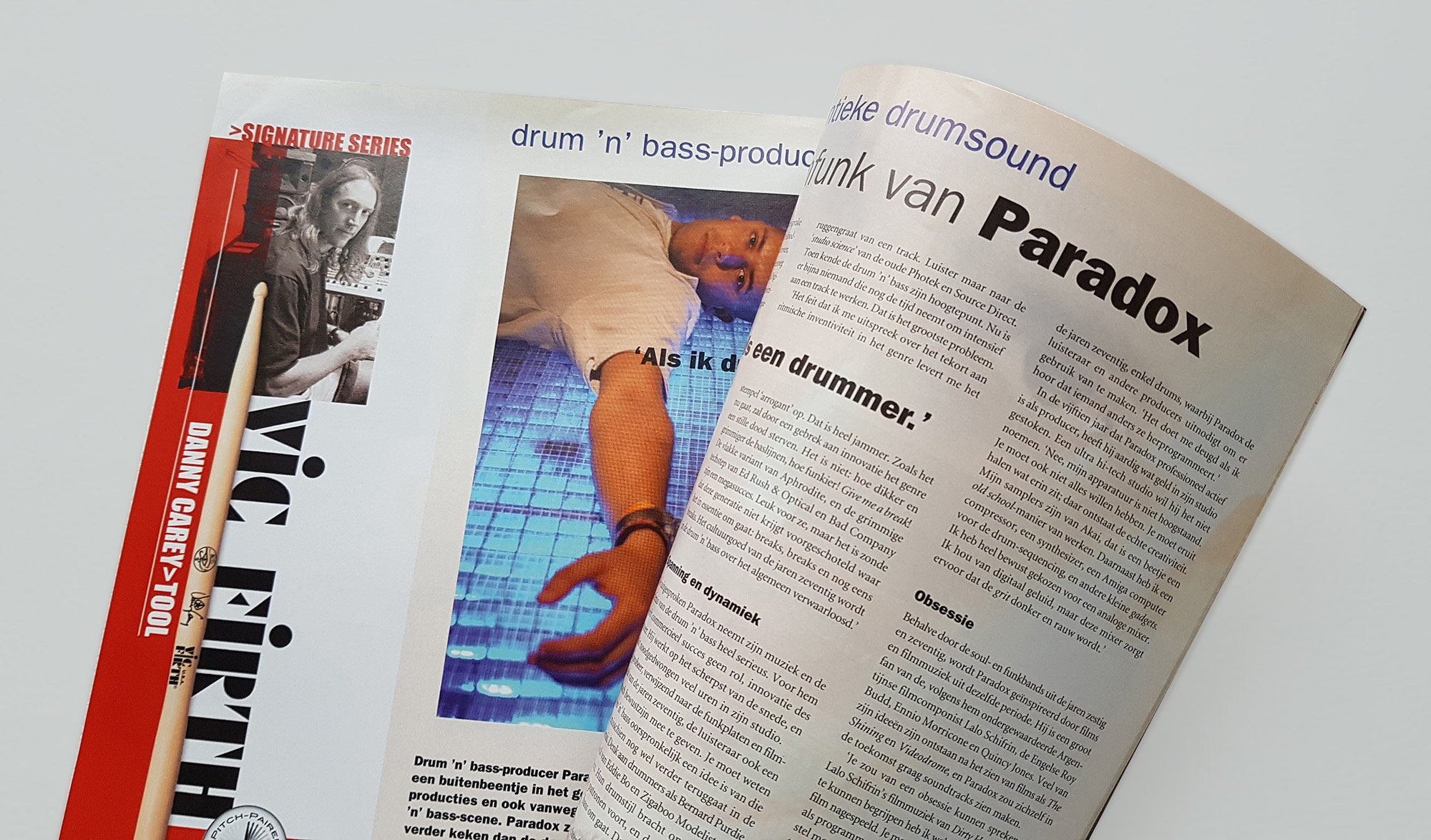
Paradox in Slagwerkkrant, 2003
Dev's ability to remain steadfast in an ever-changing world is reflected both in his music and in the tools he uses. A Commodore Amiga running a ’90s version of the OctaMed tracker coupled with an Akai S3000XL remain his beatmaking weapons of choice. Some might wonder if the technical limitations of this setup are frustrating, compared to what is available today.
“There are of course many programs that easily capture the essence of what I do and even go beyond that, but I don’t go down too much of a scientific path as that’s not a funk thing for me. I see new cats using the Amiga and OctaMed and that’s great, rekindling old skool jungle techniques is good. I’ve been using OctaMed since its inception, so I know the code inside out. Other artists I work with use DAWs, and of course I can see many benefits of using a computer program with all the bells and whistles. Watching them speed through actions that would take me an annual holiday makes me jealous, but it doesn’t stump me creatively. One of the main frustrations really is that what happens on the desk, stays on the desk. I can’t switch between projects like on a DAW. My mixing desk settings can’t be wiped until the project is complete.”
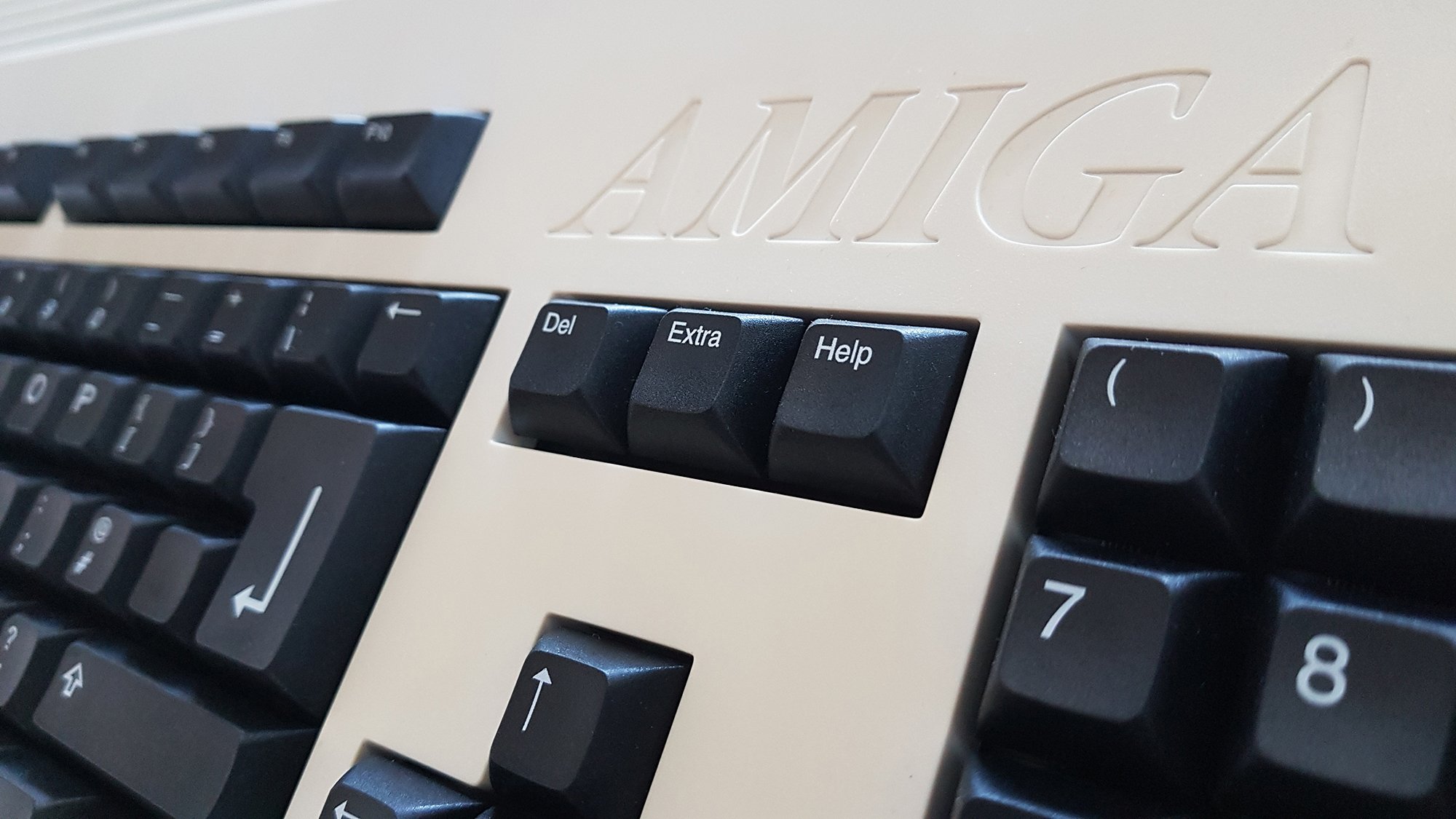
Dev continues to produce and perform with his 1992 Commodore Amiga
Breakbeat Selection
Choosing the right breaks to sample and work with is paramount, especially for high-tempo genres like drum & bass. For Dev, knowing the sound he’s looking for from the outset helps him to spot the right attributes in a break while avoiding potential problems down the line.
“I find a lot of my grooves by switching frantically between patterns in blocks and discovering loops that fold and swing into each other. It’s breakbeat gold.”
"I like a lot of breaks with subtle ride cymbal undertones as this provides the noise needed when changing octaves. There's a good example in my track “Octa4” where the break is pitch-shifted to give it extra tones.”
“I can identify the potentially problematic breaks almost instantly. If I want to retain a break's original funk swing at drum & bass tempos, fast double bass drum kicks won’t be as good at a higher tempo because the groove would eventually be squashed above 160 BPM. It’s easy to edit them of course, to slow the groove down, but most of the time that changes the overall vibe I’m going for.”
“One problematic break I endured the most was on a track for 4-Hero’s Scattered Snares album. The break in question was New Birth’s 1974 classic ‘Got to get a Knutt’. It’s a break that is well documented in hip hop but has this loose cowbell that drove me around the bend. I worked solely on the break for weeks. At one point I nearly gave up, but I persisted and it ended up with 230 slices just to sound like it wasn’t chopped by a computer, but rather to sound as if I had found it on an original lost tape, complete with undiscovered sections. The end result was my track ‘Transfigured Knut’.”
From the archives of funk records spanning several decades to the vast loop libraries that exist today, there's no shortage of potential breakbeats to sample. But there are a handful of universally-acknowledged classics that have been adopted as staple ingredients in dance music. An obvious example is The Winstons’ “Amen Brother”, which, according to Dev, has gained its iconic status because of its unique ride cymbal pattern and decades of Akai 12- and 16-bit regeneration.
"I return to certain breaks because of their octave ranges. Reusing a break by shifting the octave up and down is really great. I have a love/hate relationship with ‘Apache’ and ‘Funky Mule’, although Funky Mule’s swinging pattern is a favorite. I guess the most versatile one is still Lyn Collins’ 1972 ‘Think About It’ which has a really great snap and the best tambourine out there. In fact, I replicate this groove quite often in drum & bass as it’s a classic drum pattern – it was in my Akai last week.”
Chopping & Slicing
For decades, music makers have been slicing up breaks in samplers and rearranging them in sequencers. Music technology has developed to accommodate this process with a range of auto-slicing algorithms available today. Dev, however, is a strong proponent for doing things manually.
“Before editing breaks, I listen to them simply for speed purposes to identify where problems might be. Usually, the shuffles and fills will all be replaced with better parts of the break. I start slicing at the original tempo, remap the same groove in slices and change the BPM later. Once in my sampler, every slice is also reversed to give extra reverb tails with different attack and release envelope settings. Everything is mapped out across a synthesizer keyboard just like in a DAW setup. All the slices and chops must be seamless. It’s a time-consuming process, but if I go back to the break at different pitches and tempos, it’s worth it.”
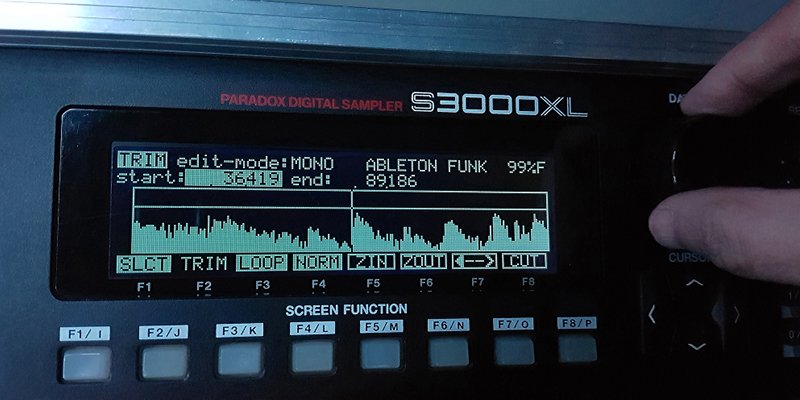
Dev uses his 1990s Akai S3000XL to manually slice his breaks
Drum Programming
It's important for Dev to put a unique stamp on his beats, but he always makes sure to pay homage to the drummers he samples.
“In my own patterns, I concentrate on thinking like a funk drummer, making sure fills and tom rolls are always programmed at the right times. I’d like the drummer of the break I’ve sampled to hear my version and be content that I’ve manipulated their art rather than destroy its legacy. I tend to retain the root of the original break, but in collaborations I disguise things more. On a track called ‘Lifeform’ with Seba, we sampled Billy Clark’s ‘Both Eyes Open’ from 1969. We used the hits, cleaned up the mud, and made a similar groove but brought it forward a touch.”
While it’s sometimes possible to identify the original breaks Dev uses in his records, these cleaner, punchier re-works can be hard to decipher. Listeners might be left wondering if they’re hearing just one break beefed up with EQ or a hybrid amalgamation of multiple breaks.
"I’ve done something new for Metalheadz where I took a lot of elements from a range of classic breaks and morphed them into one brutal loop, but generally I’ll look for single hits to layer parts of my breaks with as this lifts them. There is a stripped-back sound which I really love. I love a track with the bare break looping with no percussion and a bit more of a b-boying cypher vibe. Less is more, and sometimes that works really well.”
When listening to a Paradox record, it’s easy to become mesmerized by the scattered ghost hits that shuffle around the main kicks and snares. Rarely do classic breaks sound this way at source. Clearly, there’s some clever drum programming at play.
"These shuffles are made from hat/snare/hat/snare sequences where I have slight gaps so the samples don’t meet to give it a bit of bite. Instead of making the samples shorter by dragging MIDI notes in a DAW, I enter hexadecimal code in my tracker which also cuts, gates, and filters the ends of the hits in a shuffle – this is quite handy. I then EQ this to the break and layer it over the top.”
Maintaining that all-important funk is integral to Dev’s sound, but this can be challenging at the higher tempo registers of drum & bass. While it seems counterintuitive, it can be beneficial to slow down the feel of a break to help to retain its natural funk at faster speeds.
“Apart from deleting rapid double kicks, the first downbeat of the break is imperative, so I generally make the first kick louder than other kicks. My mastering engineer Denis Emery would say to me ‘Dev, know your kick limits’. What he meant by that, is that I love to have kick drums with different volumes and random ones way too loud on purpose. I never have kick drums at the same level, that’s too robotic.”
“Another way to slow down a break mid-loop or at the end of an 8th or 16th bar is by using what’s called a kickback, where a single kick and hi-hat is inserted to reset the loop and make it slower. It's such a simple process but it’s really important. A lot of today’s drum & bass has snares on 2 and 4 throughout, which also has its own nice groove, but this kickback injection is needed sometimes.”
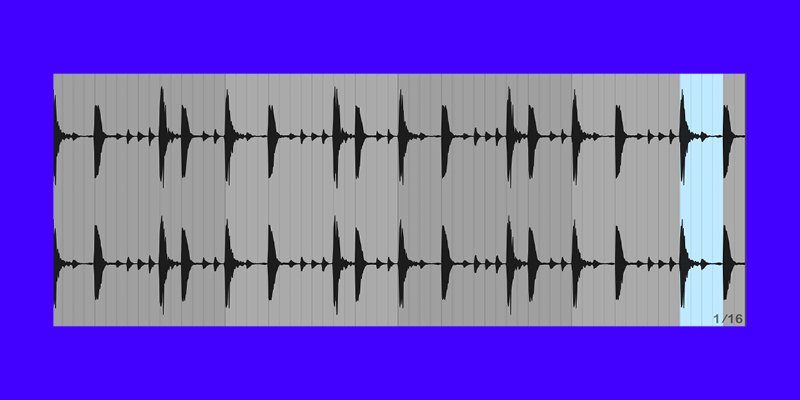
The highlighted area shows where Dev has added a kickback to his drum pattern.
Air vs Reverb
Breakbeats are essentially samples of drum and percussion solos typically taken from old funk or jazz recordings which often come drenched in their own natural reverb – this often helps define their character. When the time comes to start slicing and rearranging, however, things can become tricky as interruptions in the flow of these reverb tails can sound unnatural. To counter this, Dev suggests sampling the ‘air’ in a breakbeat. This can help to fill the space beneath edits or lengthen the tails of certain drum hits so that they bleed into adjacent hits. There are many ways to do this, like sampling small sections of room noise between hits or using reversed hits, which can help fill the space. While the end results are similar to applying a good overall reverb, there are some subtle differences.
"Sometimes, I make 6-second hall and exciter reverb trails with my effects units in mono and dump them back into my sampler. I don’t add any effects after – these must stay dry. Some people might think, ‘Why bother going to all that trouble?’ But the post-production control it puts at my fingertips is worth it. Yes, you could just send a break into a reverb, but that increases the signal in a way I don’t like. I prefer dead-end wetness.”
“One of my favorite drum fills which I edit into a roll is ‘Pat Boone Debbie Boone.’ It’s used in a lot of funk, like Denis Coffey’s ‘Scorpio’ and The Headhunters’ ‘God Made Me Funky’. Individual snares and toms can be used to do a smaller version of the ‘Pat Boone Debbie Boone’ too. To do them convincingly this is where the sampled air comes back into play, as this masks the space underneath to create an authentic fill, then it sounds like it’s been lifted off the original funk source.”
“I never have kick drums at the same level, that’s too robotic.”
EQed to Perfection
EQ plays a huge role in defining the sound of a well-processed drum & bass break. For Dev, it’s about looking for samples with character – ones that he knows will have interesting EQ results. What can follow is sometimes a lengthy process of trial and error using a mixture of additive and subtractive EQ. In one of his radio shows, Dev mentions a break from the ’60s that he and frequent collaborator Seba spent a long time EQing before it was ready to go into their track.
“I like ride breaks, and this one in particular was so crunchy that I knew it wouldn’t hold up as a main break, but I still wanted to use it as an interchange break. We were EQing it for some time and in the end layering it with snares and hi-hats, keeping its mid crunch, and applying heavy kicks, which helped a lot. Seba played the track out a few times before it was finalized and reported back that it still didn’t sound quite right, so it went through a few versions to get it where it needed to be.”
“What I also do sometimes is leave the break looping and record some real-time mixing desk work while messing around with filters for five minutes. I’ll go back and listen to the recording and get slice ideas as re-samples and EQ those also. This is a great way to get unexpected results. It’s old skool.”
“It’s worth noting: I don’t normally EQ individual slices in a break loop separately, although I’ll maybe touch the odd pierced ride here and there. The break is EQed as one when all slices are synced together.”
Paradox Radio Show vol. 38
Processing and Effects
Once Dev has sliced a break, programmed a loop, and applied EQ, it’s time to add some final touches with a range of outboard reverbs and other effects.
“While I have the breaks going straight down the middle, the layered kick and snare channels will have separate reverbs. I’m a fan of mono with stereo. The kick drum reverbs come from my Roland reverb rack and the delays and ambient effects stream from my TC Electronic and Alesis racks. I don’t think you need more than that for breakbeat music. I did start one track with stereo breaks, but within hours it really started to annoy me. It began to sound like the drums were in the cupboard under the stairs so I turned it back to mono. It’s just personal preference.”
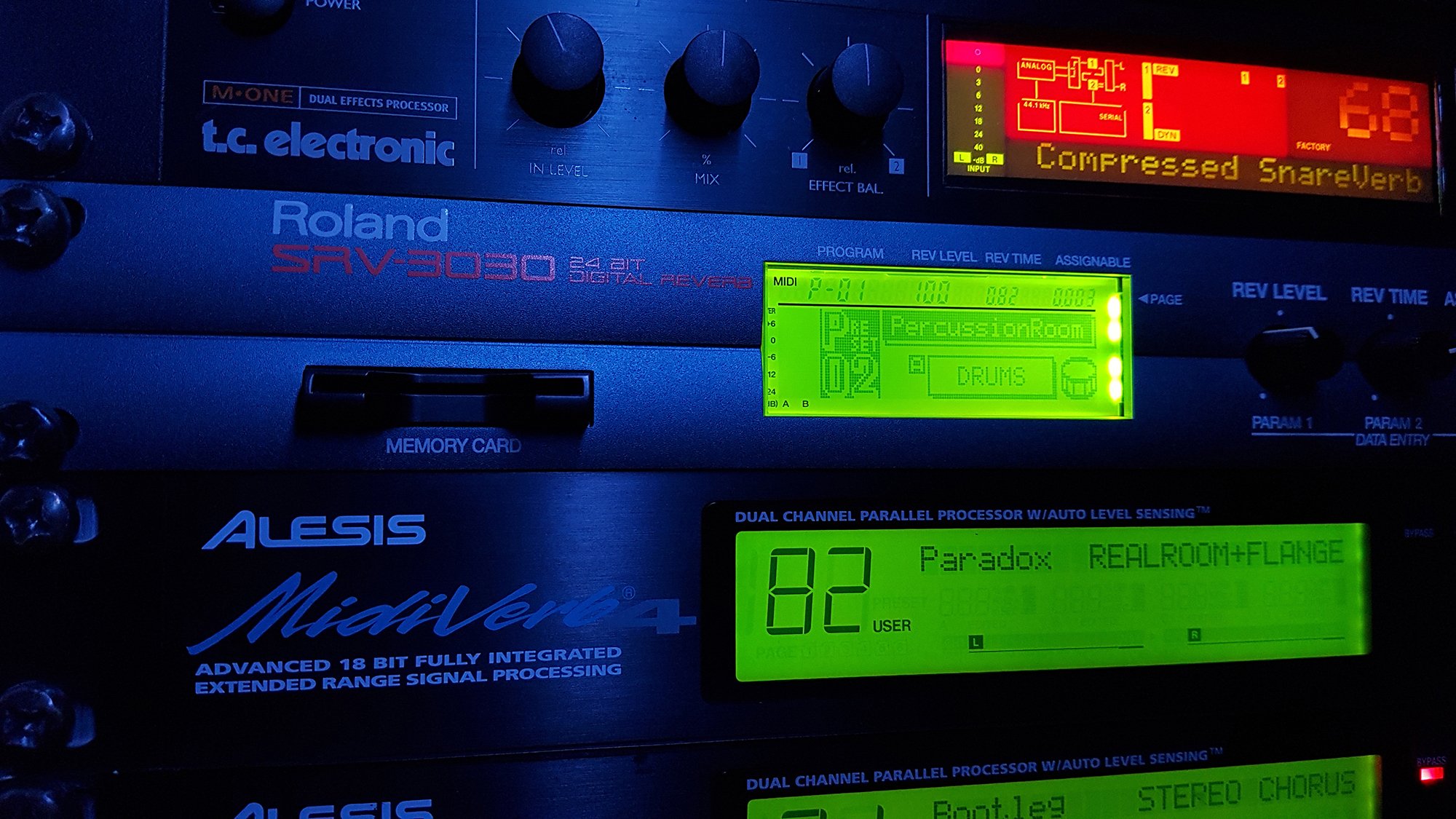
Dev’s hardware effects rack
The love and attention to detail that Dev puts into beatmaking is obvious. He rarely talks about his craft in this depth, and notes that the details are “quite secret”.
“At the end of the day I thought about it, and if young people replicate these techniques in their own way via their DAWs it’s not a bad thing at all.”
2022 looks busy as Dev celebrates his 196th vinyl release with “Streetbeat” and “Drum Throne” on Paradox Music, featuring a photo of his trusty Akai S3000XL sampler on the sleeve.
“There will be Paradox 12"s to come on Samurai Music, Over/Shadow and Metalheadz.
Also another breakbeat 12" on Sneaker Social Club, a remix on Renegade Hardware, and a new Seba & Paradox this year. Sketches are underway on my 200th 12", but due to the ongoing vinyl manufacturing sagas that will probably surface next year now. I resume live PAs in March, so I’m really looking forward to getting back on stage with my Commodore post-lockdown. I’ve missed that interaction.”
Before saying farewell Dev mentions some other artists releasing similarly impressive beats, including Gremlinz, Equinox, and Holsten.
"You only need to go to a Rupture night in London to hear it’s alive. Funk drumming is the backbone of jungle and always will be. The resurgence of underground breakbeat is really positive. Music-makers can check out what other programmers are doing and learn from what’s being achieved in modern DAWs. For me, this is one of the bigger surprises over the last few years in club world and it’s great for all of our scenes.”
Keep up with Paradox on Soundcloud, Instagram, Twitter and Bassic.co
Text and interview by Joseph Joyce